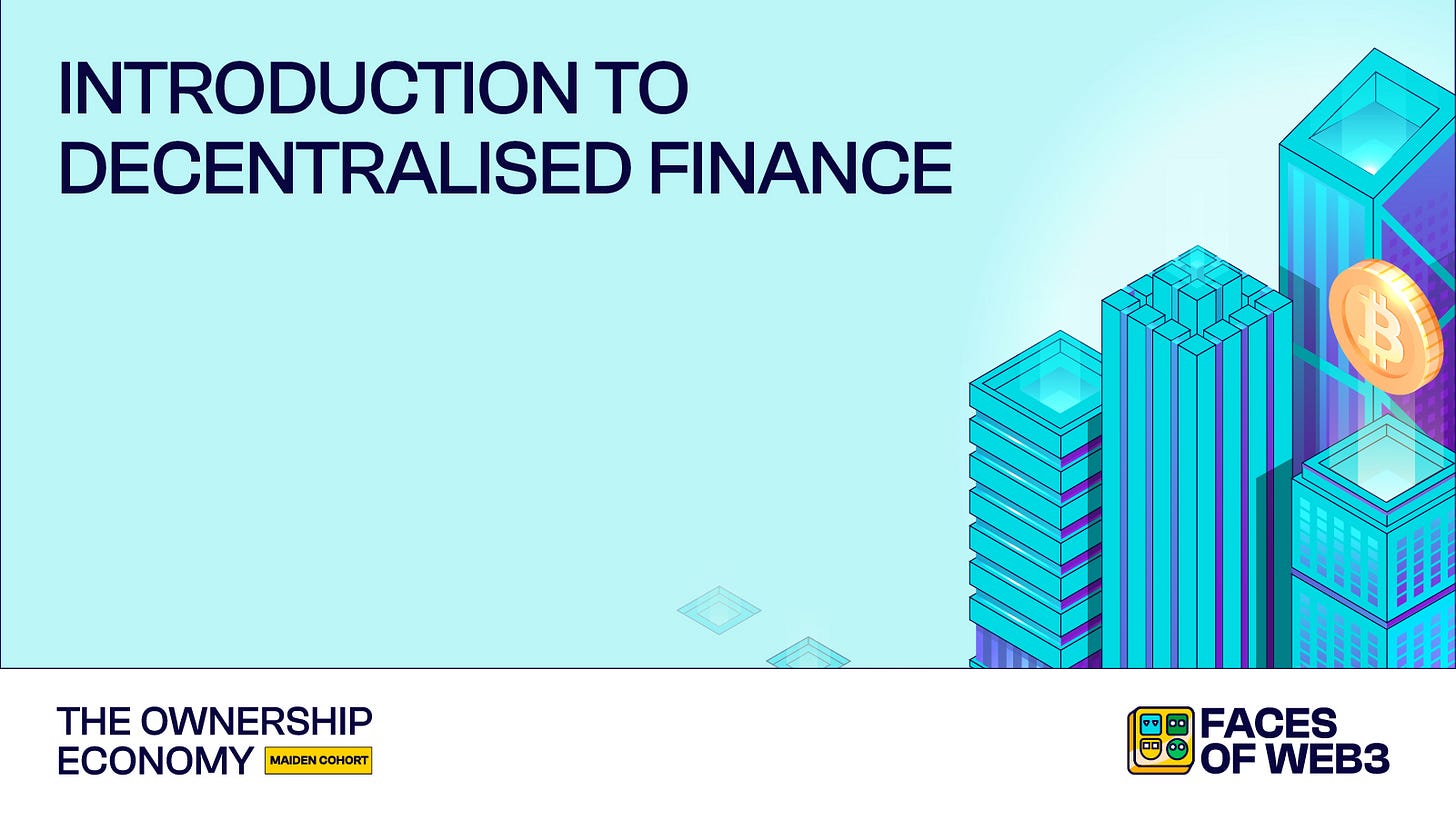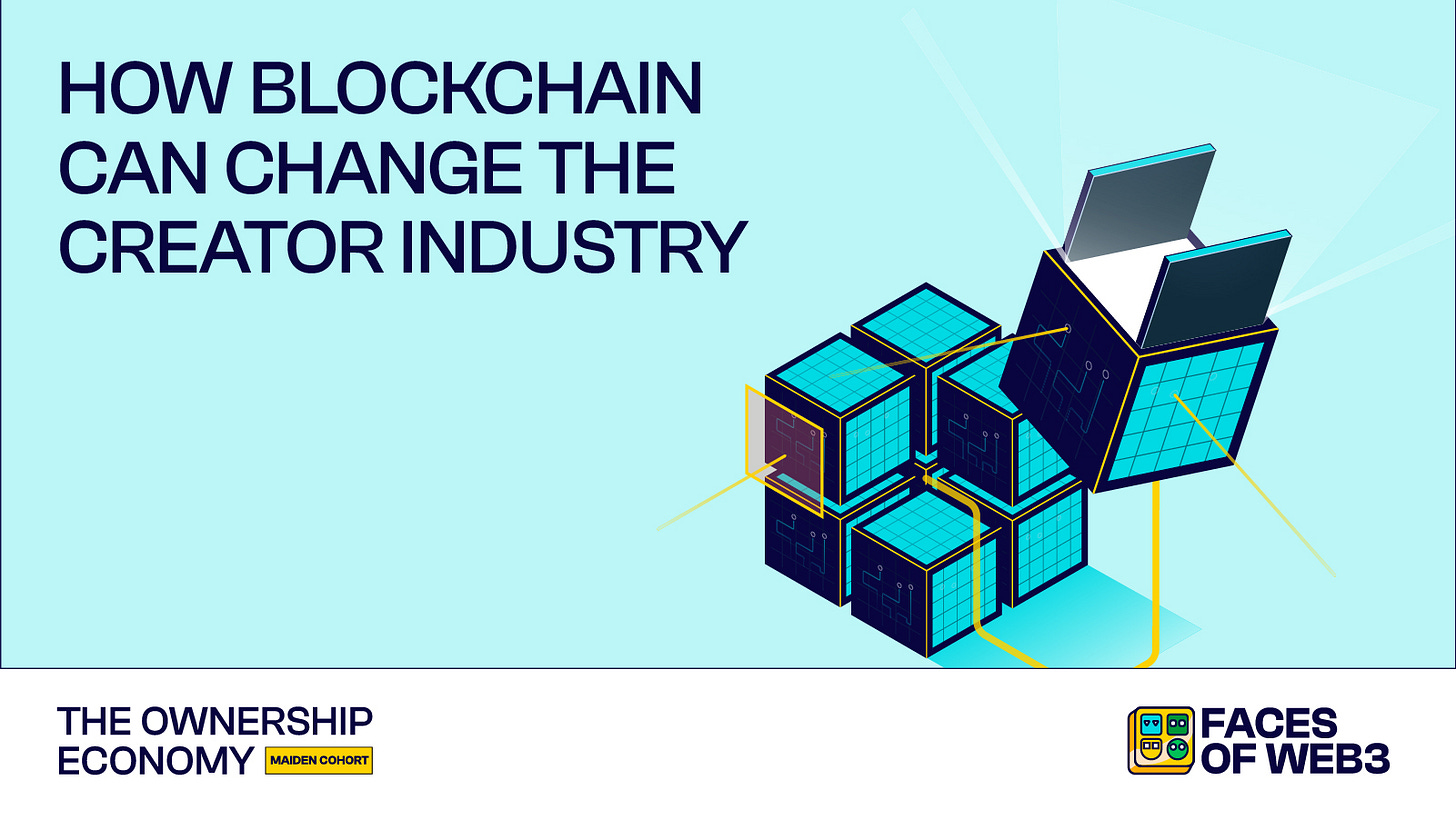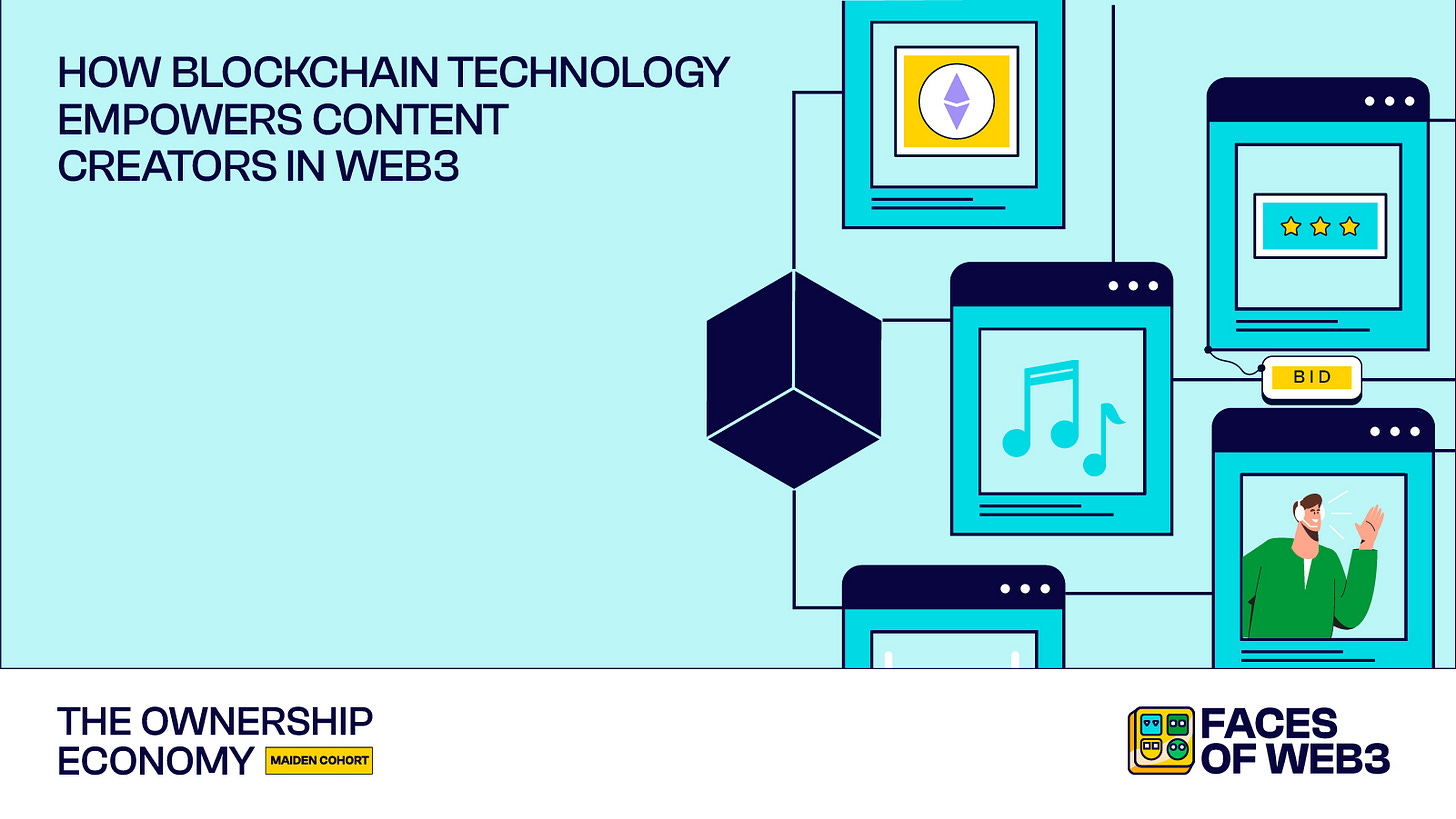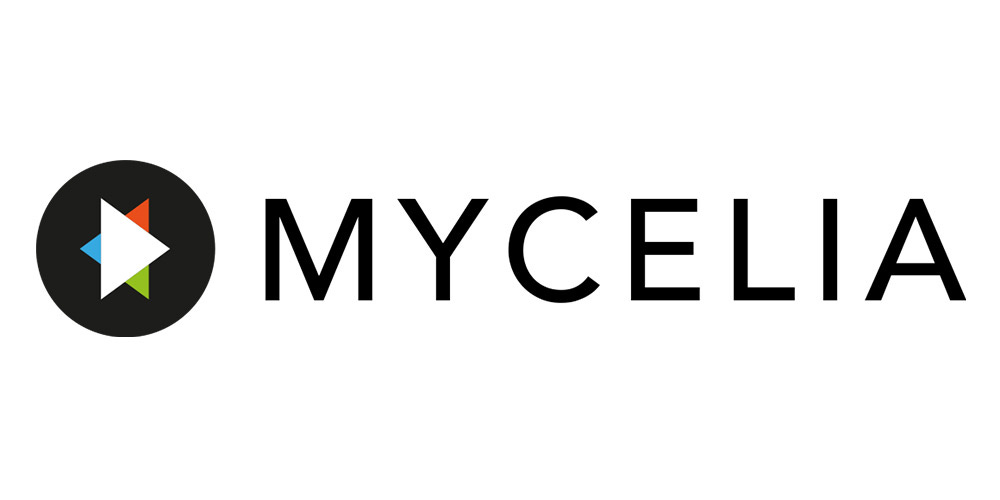Module 2: Decentralized Finance, What is it and How Can it Benefit Content Creators?
Borderless Finance for the New Creative 🔉
The leading players in the digital world are increasing at an unfathomable rate. Content creators are constantly flooding the internet with different forms of digital media across various social platforms. The creator economy, which has undergone a significant transformation recently, is evolving along with the internet at an unprecedented rate, with Web 3.0 leading the way.
In recent times, information has become accessible at the click of a button or with a simple screen swipe. Today's content consumers expect more from their favorite content creators; they want to experience a true sense of value and ownership.
Although the new internet (Web 3.0) is still in its infancy, it offers technologies such as machine learning, artificial intelligence, virtual and augmented reality, smart contracts, decentralized finance, blockchain, and cryptocurrencies. The “decentralized web” is transforming the content economy from the traditional system to a more decentralized and inclusive marketplace. Original content creators now possess greater power over their media and receive rewards in form of royalties. The creation, ownership, and payment of digital content by creators will change as a result of the third-generation internet.
Significant challenges faced by Web2 content creators
Social media networks still retain an excessive amount of revenue, which wouldn't even exist if it weren't for the creators themselves. Simply put, these centralized platforms rely on content creators to drive traffic through engaging content as well as build an audience for advertisers. This alone makes creators feel under-represented, unrecognized, and often undervalued for their works. As creators, the significant challenges that you might experience include:
Content piracy
Undelivered content curation rewards.
High cost of operation.
Lengthy payback period.
Limited channels for monetization.
Aggressive competition.
Content creators receive recognition and rewards for every piece of content produced in the Web3 space.
Creators have control over the content.
Take major decisions regarding ownership, pricing, earnings, etc.
Make the system profitable for all parties by enabling consumers to earn income for viewing, supporting, and contributing to content creators' work.
In light of this, creators can reclaim control over their works and the communities they have built, and blockchain technology is significantly contributing to this development.
But what is the blockchain? How does decentralization help me as a creator? How can you use Web3 technology to monetize your content?
Decentralization and the Blockchain
Despite being often linked to cryptocurrencies, blockchain is proving useful in a wide range of other sectors. All sectors—finance, media, entertainment, healthcare, education, and industry—benefit greatly from blockchain technology.
With blockchain technology, we can create decentralized and transparent records of legitimate owners and their content. Through the use of smart contracts, cryptocurrency payments and documentation can easily be automated. The distribution channels cannot be eliminated with blockchain, but they can be made to provide more interactive, transparent, and varied pricing for the content they wish to license from the owners.
A blockchain is essentially made up of several linked pieces of data. Each piece of information is kept in a "block," which has a hash that is uniquely it's own. Each block in the chain is linked to the hash of the one before it, aside from the initial block. The hash changes, which would theoretically break the links throughout the rest of the blockchain and reveal that it had been tampered with if data in one of the blocks was compromised.
In essence, blockchain technology brings a higher level of security, transparency, and traceability to the content industry. Using a blockchain explorer, one can simply retrieve each block and the data contained within it because they are all timestamped.
Some key terms associated with blockchain technology include;
Decentralization: Decentralization in a blockchain is the transfer of power, oversight, and decision-making from a centralized entity (an individual, an organization, a government, or a group) to a distributed network. Decentralization aims to restrict the influence centralized organizations have over the financial market.
DeFi: Decentralized Finance, popularly referred to as DeFi, refers to the movement that allows users to utilize financial services that include borrowing, lending, and trading digital assets without the need to rely on centralized entities or intermediaries. These digital assets could be cryptocurrencies, decentralized tokens, stablecoins, or non-fungible tokens (NFTs).
Cryptocurrencies: A digital currency, or cryptocurrency, is an alternative payment method developed using encryption algorithms. By utilizing encryption technologies, cryptocurrencies can act as both a medium of exchange and a virtual accounting system.
Metadata: Metadata is "data/information about data," to put it simply. Understanding the structure, nature, and context of the data is made easier by the metadata. Data search and retrieval are made simple by metadata. Additionally, metadata aids in monitoring the accuracy and dependability of data. Metadata is the information about the block itself if each block in a blockchain is storing a piece of data. That comprises the timestamp, the previous block's hash, and the unique code (or hash).
Smart Contracts: A blockchain-based smart contract is an agreement that goes into effect once all the prerequisites and predetermined terms are met. A smart contract is therefore a piece of self-executing code that activates when the terms of the contract between the buyer and seller are met.
NFTs: Non-fungible tokens (NFTs) are unique cryptographic tokens only available on blockchains and cannot be replicated. NFTs are also known as “Crypto media”, digital assets that are traded using cryptocurrencies. NFTs in the realm of digital art has exploded recently because they can be traced back to the original creator and the creator can get paid each time the asset is traded. Real-world objects like artwork, digital media, and real estate can be represented by NFTs. These physical assets can be "tokenized," which improves the efficiency of trading while lowering the risk of fraud.
Anti-Piracy of Content: Blockchain can still be a very effective tool to address the issue, even though it cannot completely stop piracy on its own. Any illegal activity on the distributed ledger can be quickly and easily tracked thanks to the transparency of the blockchain network. As a result, it is very challenging to share media content illegally. The blockchain enables the legal user and the legally acquired owner to be linked. The payment system serves as evidence, whereas the pirates do not handle evidence of payments. Blockchain enables content owners to digitally fingerprint and register their content. The structure of how their product is to be distributed will be up to the creators. To issue a take-down notice, the pirated copies can then be quickly found and tracked. This will potentially deter pirates from illegally leaking the content or benefiting from it.
Revenue Sharing: Transparency, security, and speed are the issues facing the centralized model. All three requirements are satisfied by blockchain. Blockchain employs smart contract technology to guarantee transparency. Creators can maximize the transparency of their revenue-sharing transactions with the help of smart contracts. Every Web3 creator is ensured by the smart contract that the revenue share is accurate. The blockchain platform secures funding transactions in the media sector and maintains contract and term transparency. Creators are aware in real-time of what share of the revenue they are likely to earn.
Royalties: One of the biggest problems facing the music and media industries is the payment of royalties. Regarding the payment of royalties, the legitimate owners and the media outlets frequently disagree. But it is possible to regularize the payments using the blockchain. The Open Music Initiative (----OMI) was founded by influential figures from the media and music streaming websites. The blockchain ledger in this case contains all the data on the music assets and the right holders. Smart contracts are used to automatically make the payments of royalties. The blockchain can be used to track any errors or contract violations. The transparency of the blockchain ensures that music owners receive their fair share of profits and can access it themselves to prevent any alterations or tampering.
Creative Funding: Films and media startups typically raise money through crowdfunding, venture capital, or angel investors. The year 2017 saw the emergence of blockchain-based funding, which was a new type of funding at the time. The funding is carried out via an ICO (Initial Coin Offering). The new startups are crowdfunded by investors using cryptocurrencies. They are given tokens that can later be exchanged for goods and services. The movie "No Postage Necessary" was funded with the aid of blockchain technology, and it was released as a result. To encourage more people to watch the movie, it offered tokens as incentives to moviegoers who uploaded reviews of it.
Facilitating Micro Payments: With blockchain, you can pay little by little for what you want rather than paying a lot for something you don't need. The need for distribution channels is eliminated by blockchain. This demonstrates that the owner has full control over his content. Since the intermediary payment network is eliminated, it permits micropayments. As an example, the user will be able to pay for a song he likes rather than buying the entire album to listen to that one song. Alternatively, readers can purchase individual news articles without purchasing the entire newspaper. As a result, you will be able to mint a movie as an NFT to watch online rather than paying a monthly or yearly subscription fee to the streaming service. In essence, customized services will be possible with blockchain.
Defi Tools for Content Creators
Content Box
Content Box is a decentralized tool that seeks to significantly improve the content sector. A single payout system, a shared user pool, and a shared content pool are just a few of the features this decentralized, open-source platform offers to ensure that creators receive a fair share of their royalties each time their work is used by various platforms. Consumers and producers will be in close contact. As a result, there won't be any need for middlemen. Advertisers have access to a shared ledger of ad statistics that is controlled by smart contracts. This supports auditing and verification, maintaining the transparency of documents.
This payment system rewards content producers for each time their work is viewed. Tokens will be given to customers based on their contributions. These tokens are valuable and can equally be spent in exchange for content like streaming a movie or listening to a song.
SoCool
SoCool is a decentralized autonomous organization (DAO) that combines a collection of tools and smart contracts to create a completely decentralized ecosystem where creators and their followers will be rewarded for their participation and contributions. The SoCool ecosystem rewards everyone for their efforts through cutting-edge and successful tokenomics, whether they are made through staking, yield farming, developing original NFTs, or even using the fundamental financial tools the platform provides.
To create a CREATE-TO-EARN ECOSYSTEM that is genuinely one-of-a-kind and durable, SoCool blends financial and social connections with top-notch DeFi and NFT services.
STEEMit
Steemit is a blockchain-based blogging and social media platform that rewards users with STEEM cryptocurrency in exchange for creating and curating content. It helps social media and online communities by rewarding contributors with virtual currencies. Similar to Reddit, it works with upvotes and downvotes. Every piece of content is kept on the servers. It is simply a revenue-sharing website. The blockchain contains details about the rewards structure, and new STEEM tokens are minted daily. The community pool is distributed to members based on the popularity of their work.
Binded
Binded is a decentralized platform that provides copyright protection. Monitoring the use of your copyrights is made easier with blockchain registration. It is one of the best platforms for free, permanent media protection. It aspires to make creativity the most valuable resource on earth. Each user has access to a private, secure vault where he can deposit his photographs. After that, each image is given a permanent blockchain record. They may keep an eye on how photographs are used by using the online search feature, which aids in identifying specific instances of copyright infringement.
Mycelia
For music producers, Mycelia serves as a center for research and development. Imogen Heap, a Grammy Award-winning musician and engineer who currently serves as the organization's CEO, founded Mycelia intending to empower musicians by creating a "vibrant and sustainable music industry ecosystem" in which everyone is compensated and acknowledged equitably and transparently.
Mycelia runs on the Ethereum blockchain with the help of smart contracts. Musicians can sell and license their music using a peer-to-peer model. Automatic payments will be made to the artist, who will then distribute them fairly to all parties involved in the song's creation. The consumer's money is the artist's property, which is then dispersed to the appropriate parties because there are no middlemen costs to pay.
Final Thoughts
Even on its best days, the alternatives available to creators for monetization right now are troublesome in the dysfunctional digital ecosystem of today. In comparison to the centralized platforms they currently compete with, decentralized communities can provide direct relationships with audiences, better reward strategies, and fairer systems of governance. Consider exploring decentralized platforms for your next big break if you're a creator trying to diversify and explore new streams of revenue.








